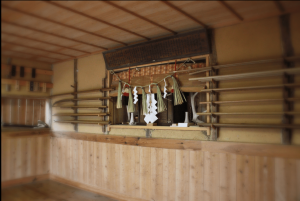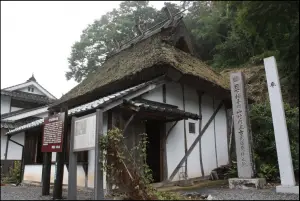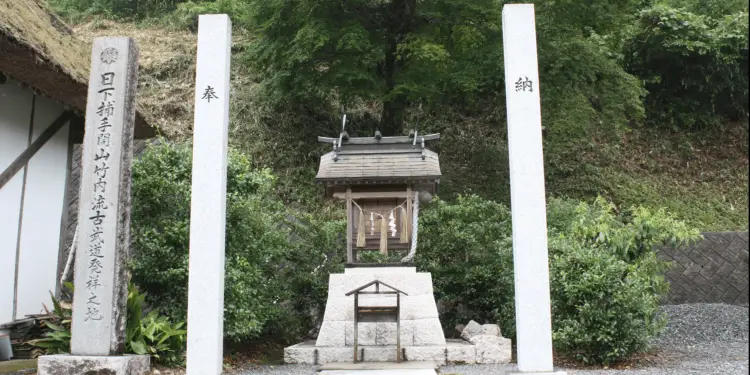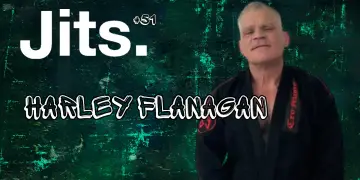The Myth Surrounding the Origins of Jiu Jitsu
It is 1500’s Japan, a warrior has isolated himself from the rest of the world, retiring to a mountain forest to perfect his deadly art. He is a Samurai, lord of a castle, and a veteran of many battles. Despite his noble birth the last six days have been spent living off the land and practicing swordplay, he sleeps under the cold mountain sky praying to the God Atago. The old soldier is training with a wooden sword almost a meter in length, an imitation of the same sword he uses in war. But he is a small man, even by the standards of feudal Japan, and the sword has always felt just a bit too large. Today it feels especially heavy, the warrior sighs, exhausted and more than a little dejected. He knows that he is missing something. Some new perspective that will change the way he fights forever, something to make him invincible. He lies down to rest on the wet forest earth, using his sword as a pillow.
The wily old Samurai wakes up with a start, aware that someone is standing close by. Rising to his feet in a flash, he brings the wooden sword up and faces the intruder. Suddenly the warrior is scared. The man before him is like no one that he’s encountered in decades of soldiering. The newcomer is dressed like a priest, so the Samurai wonders for a moment if he’s from the nearby Sannomiya Temple. But the priest’s face is hideously wrinkled, his skin is a devilish crimson with eyes that are yellow like a tiger’s, fangs emerge through his lips.
Mastering his fear, the Samurai attacks, swinging the long wooden blade in a perfect downward stroke. But the priest isn’t where he was before. Stepping towards the Samurai, the priest closed the gap. Taking a firm grip on the Samurai’s Kimono, the priest turns and throws him over his shoulder, smashing him into the ground. Without taking a step the priest drives his knee into the Samurai’s belly. Smothered by the priest’s weight and the stink of old incense, the Samurai is helpless. The warrior then feels two hands, hard and gnarled like ancient wood, sliding into the collar of his kimono. There’s a squeeze, unimaginably tight and the warrior hears himself gurgle in the stranglehold. Just as he is about to pass out, the Samurai yields. As the monstrous priest stands up, the Samurai bows. In true spirit of a martial artist he asks to become a student of this mysterious monk. The priest picks up the long training sword from where it has fallen and snaps it in half.
“That” He says, “is your first lesson.”

The History
The question of the true origins of Jiu Jitsu has been a cause for fascination and controversy among practitioners all over the globe. For many die-hards, the story begins in Brazil with the meeting of Judo master Mitsuyo Maeda and the Gracie family. There’s no doubt in my mind that this moment was pivotal, a cornerstone of the sport we recognize today. But the fact remains that Maeda was a student at one point in time himself and he learned his skills from Japanese masters with a lineage dating back hundreds of years.
The Samurai in the story above was Takenouchi Hisamori, a legendary warrior who taught grappling and swordplay to the Shogun. In 1532 he founded the Takenouchi-Ryu, among the oldest martial arts schools still active in Japan. To this day, the school is led by his descendants, and the 14th generation Grand-Master Takenouchi Toichiro can still be found in the dojo.
But the Takenouchi-Ryu has one claim that will be of great interest to students of BJJ, Judo, or any grappling art. Regarded as the inventors of Ancient Jujitsu, they developed the grappling style that has transformed to become BJJ. The founding story of the Takenouchi-Ryu (described here with a strong dash of artistic license) is that Takenouchi Hisamori learned grappling from a mysterious apparition while training alone in the mountains. The apparition, regarded as an incarnation of the Shinto god Atago, defeated Hisamori and “subdued him beneath his knees.” After scoring points for the world’s first knee-on-belly, the god broke the Samurai’s training sword in half and taught him how to fight with his hands and a short dagger.
This practice of mountain training, Yamagomori, will be familiar to more than those who enjoy watching Samurai movies. I spoke with Takashi Yagi, one of the senior teachers at Takenouchi-Ryu HQ, and he made a direct comparison between Takenouchi’s journey and that of Rickson Gracie, who retired into the mountains outside Tokyo, preparing for his fight with Nobuhiko Takada during Pride 1. Moreover, there are other similarities to the Gracie story. Takenouchi Hisamori was described as a small man, much like Helio Gracie. Two masters that developed a system joint-locks and chokeholds to overcome larger, stronger enemies.
The headquarters of the school, built in 1664 (the same year as the palace of Versailles), is located on Mt. Tengu, the very same mountain where the Atago god defeated Hisamori. Within the Dojo is a shrine where students pray at the beginning and end of every session. Next to the shrine is an inscription that boasts “Here the Divine Spirit Atago granted mankind Jujitsu.” This claim is not a simple marketing ploy, and Takashi-Sensei informed me that the technique and philosophy of his school haven’t changed in the past 500 years. Takenouchi Jujitsu is not a sport, it is an all-encompassing system of battlefield survival. Although they did develop many of the barehanded techniques that can be seen in Judo and BJJ, if you watch a demonstration, you’ll see that an arm-lock in the Takenouchi style ends with a dagger between your ribs. Theirs is a holistic approach to combat that includes toride (armed grappling), kenjitsu (sword-fighting), hojutsu (rope tying), and assassination. Even poisons are not off the table, “In a fight with no rules” Takashi-Sensei says, “there is no beginning” so be prepared to take on the enemy at any time and in any fashion.
This of course makes sense in the context in which Hisamori lived. He developed his school in the middle of Japan’s Sengoku-Jidai, two centuries of unending civil war when clan faced off against clan in a manner that makes Game of Thrones look like the teddy-bears picnic. Although the philosophy originated amid the bloodshed of civil war, it can still inspire and improve the lives of modern students. The greatest quality of a martial artist, Takashi-Sensei reassures me, is to avoid fighting in the first place. This philosophy I think, is the true inheritance of the gentle-art. Although I’m sure I’d pay good money to watch Kron Gracie facing his opponent with a Katana. The doctrine of peaceful self-defense is something that we should all remember and carry over from the origins of the martial art, into the era of sport Jiu Jitsu.
This piece is part of a series diving deep into the origins of Jiu Jitsu, click here to look through the rest of the series.













